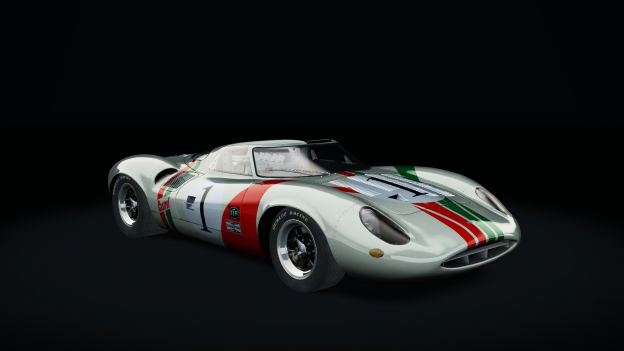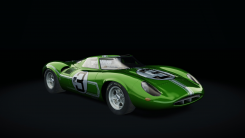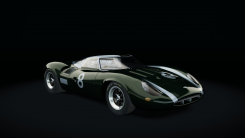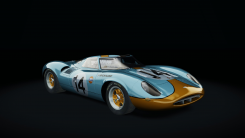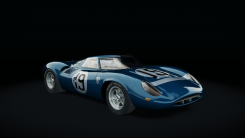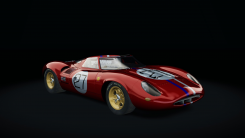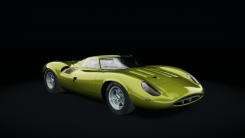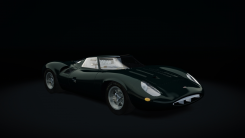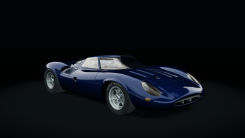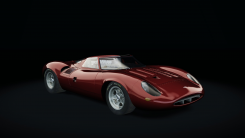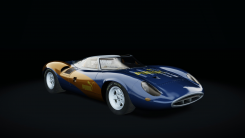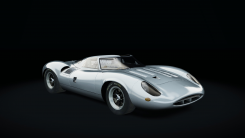Jaguar XJ13 current version 0.9
- Assetto-db rating
| Traction type | RWD |
|---|---|
| Electronics |
|
| Real mass | 1.026 kg (with driver: 1.101 kg) |
| Gears | 5-shifter |
| Engine dyno-test |
400 bhp @ 7.250 rpm 425 Nm @ 5.500 rpm 7.750 rpm max. |
| Tyres version | 10 |
| Car version | 0.9 |
|---|---|
| Brand |  Jaguar Jaguar |
| Class | prototype |
| Power | 472 bhp |
| Torque | 500 Nm |
| Weight | 1026kg |
In 1964, after nearly a decade away from international sports car racing, Jaguar's Competition Department began work on a new race car. Dubbed XJ13, it was conceived with the ultimate goal of competing against the likes of Ford and Ferrari for outright victory at Le Mans. With the green light given for construction in late 1965, XJ13 was completed in 1966 and finally took to the track for testing in the spring of 1967.
With a low-drag body designed by aerodynamicist Malcolm Sayer and a 5.0L quad-cam V12 making ~500bhp, XJ13 was theoretically capable of speeds over 200mph. But development dragged on for two years past the initial target, and that, combined with new FIA protoype rules in 1968 and changes with Jaguar's corporate management, spelled the end of the project for good. Though it was tested and developed thoroughly and showed true potential, it was obsolete by the time it was ready to go and was never raced.
Shelved in early 1968, the car sat under a dust cloth until 1971 when it was hauled out to be filmed for promotional material for Jaguar's new line of V12 road cars. Works driver Norman Dewis crashed the car at speed, somehow surviving the ordeal unharmed, but XJ13 was not so lucky. It was rebuilt in 1973 and exists in that form to this day under the care of the Jaguar Heritage Trust. It is this body style that is modeled in Assetto Corsa.
